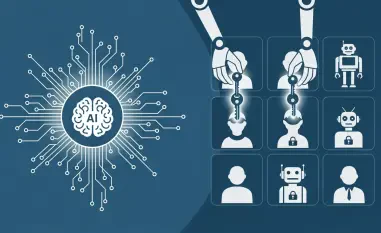I’m thrilled to sit down with Malik Haidar, a renowned cybersecurity expert whose extensive experience spans combating digital threats and hackers across multinational corporations. With a deep background in analytics, intelligence, and security, Malik uniquely blends technical expertise with a business perspective, making him the perfect person to discuss the implications of major cybersecurity incidents. Today, we’ll dive into the MOVEit data breach of May 2023, exploring its far-reaching impact on organizations, legal and reputational consequences for enterprise software providers, shifts in investor behavior, and the broader trends shaping the tech sector. Let’s unpack how this event has redefined cybersecurity as a critical focus for businesses and investors alike.
Can you walk us through the key events of the MOVEit data breach that occurred in May 2023 and what made it such a significant incident?
Absolutely. The MOVEit breach was a massive cybersecurity incident that unfolded when the ransomware group Clop exploited a zero-day SQL injection vulnerability in the MOVEit file-transfer software. This flaw, later identified as CVE-2023-34362, allowed attackers to access sensitive data across thousands of organizations. What made this so significant was the scale—over 2,700 organizations and 93.3 million individuals were affected. It wasn’t just a single company’s problem; it exposed systemic weaknesses in third-party software ecosystems, highlighting how interconnected and vulnerable modern enterprises are. For many, this was a wake-up call about the risks embedded in tools we often take for granted.
How did the attackers manage to exploit this vulnerability, and what does that tell us about the nature of modern cyber threats?
The Clop group used a sophisticated approach to target this SQL injection flaw, which essentially let them manipulate the software’s database to gain unauthorized access. They moved quickly, using this zero-day vulnerability—meaning it was unknown to the software developer at the time—to extract data before patches could be rolled out. This tells us that modern cyber threats are increasingly opportunistic and fast-moving. Attackers are constantly scanning for these hidden weaknesses, especially in widely used enterprise tools like MOVEit, knowing that a single exploit can ripple across entire industries. It’s a stark reminder of how critical proactive threat detection and rapid response are in today’s landscape.
What were some of the immediate legal repercussions faced by the developer of MOVEit, and how did that extend to other organizations?
Right after the breach, the developer faced a barrage of legal challenges, with over 40 class-action lawsuits filed within weeks. Victims accused the company of negligence, claiming they failed to patch the vulnerability in time. But the legal fallout didn’t stop there—it spread to other organizations that relied on MOVEit, like major institutions including universities and tech giants. These entities were dragged into lawsuits because their data was compromised through this third-party software. It showed how supply chain dependencies can turn a single breach into a legal nightmare for an entire network of organizations, amplifying the stakes for everyone involved.
How did the breach impact the reputation and financial standing of the software developer in the short term?
The reputational hit was severe. Trust in their product eroded almost overnight as clients and analysts questioned how such a critical flaw went undetected. Financially, their stock price took a significant hit, dropping between 15 to 20% in the immediate aftermath. This wasn’t just about numbers—it signaled to the market that even established players in enterprise software could be vulnerable to catastrophic failures. The damage to their brand made customers and investors think twice, and it’s a textbook example of how cybersecurity lapses can translate directly into business losses.
In what ways has this incident influenced how investors assess risks in the enterprise software sector?
The MOVEit breach was a game-changer for investors. Before this, valuation metrics for tech companies heavily focused on growth indicators like revenue or customer acquisition. Now, there’s a noticeable shift toward evaluating cybersecurity readiness and incident response capabilities. Investors are digging deeper into how companies manage third-party risks and whether they have robust protocols to prevent or mitigate breaches. It’s also sparked concern about big players with complex supply chains, as any weak link could lead to a similar disaster. This incident made it clear that ignoring cybersecurity isn’t just a technical oversight—it’s a financial liability.
How has the demand for cybersecurity solutions and related investments evolved following this breach?
Post-breach, we’ve seen a surge in demand for cybersecurity solutions, and that’s reflected in the market. Companies specializing in threat detection and response have seen their stock valuations climb as businesses rush to bolster their defenses. There’s also growing interest in cyber insurance as a financial safety net, with insurers seeing increased attention from investors. It’s a recognition that breaches are inevitable to some extent, and the focus is shifting toward preparedness and recovery. This trend shows cybersecurity moving from a niche concern to a core pillar of corporate and investment strategy.
What long-term trends in the tech sector do you see emerging as a result of incidents like the MOVEit breach?
Several major trends are taking shape. First, there’s a spike in mergers and acquisitions within cybersecurity, as larger tech firms acquire specialized players to strengthen their capabilities. Second, regulatory pressure is mounting, with discussions around stricter data protection laws that could impose new compliance burdens on software providers. Lastly, there’s a big push for supply chain audits—companies are prioritizing vendor risk assessments to avoid being caught off guard by third-party vulnerabilities. These trends signal a broader shift toward accountability and resilience in the tech sector, and they’re likely to define the industry for years to come.
What is your forecast for the future of cybersecurity in the enterprise software space over the next decade?
I believe we’re heading into an era where cybersecurity becomes inseparable from enterprise software development. Over the next decade, I expect security to be baked into every stage of the software lifecycle, from design to deployment, rather than treated as an afterthought. We’ll likely see more stringent regulations globally, forcing companies to adopt higher standards or face severe penalties. Investment in AI-driven threat detection will skyrocket as businesses look for ways to stay ahead of increasingly sophisticated attacks. At the same time, I think supply chain security will become a top priority, with more transparency and collaboration across vendors. It’s going to be a challenging but necessary evolution, and companies that adapt early will have a significant edge.













